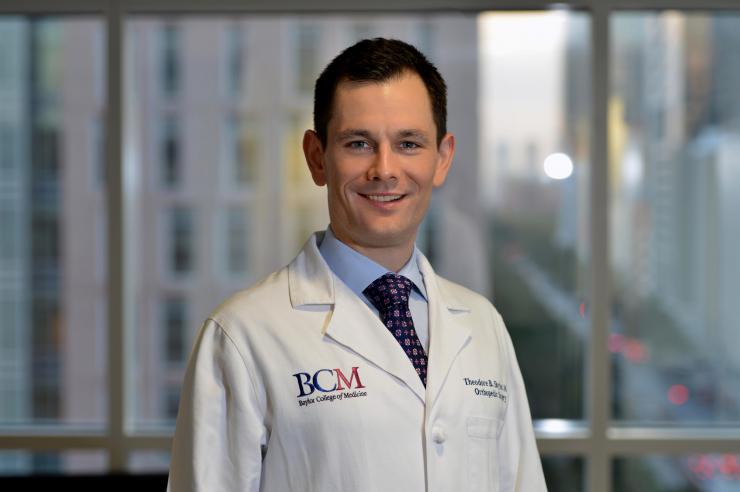Don’t let ACL injuries sideline soccer goals

The Women’s World Cup is in the limelight and in addition to it being a great example of physical activity for aspiring soccer players of all ages, it’s an important reminder of the prevention of and recovery from ACL tears. A sports medicine expert at Baylor College of Medicine discusses this injury and why female soccer players are at risk.
“Female soccer players are one of the highest risk groups among athletes for ACL tears,” said Dr. Theodore Shybut, associate professor in the Joseph Barnhart Department of Orthopedic Surgery at Baylor. “In fact, studies have reported that female athletes are 2 to 10 times more likely to have ACL tears compared to male athletes.”
The anterior cruciate ligament (ACL) is a ligament in the central part of the knee that stabilizes the knee during cutting, pivoting and deceleration activities, such as changes in direction, landing from jumps and other agility movements. A tear in the ACL occurs when an athlete’s momentum carries her body past a planted foot, causing the knee to buckle and rotate. About 70 percent of ACL tears are non-contact injuries.
When female athletes cut and pivot during sports such as soccer, they have greater trunk motion compared to male athletes, which produces higher rotational forces at the knee.
The classic symptom of an acute ACL tear is feeling a pop in the knee while cutting or pivoting, with subsequent instability, which means the knee feels wobbly or gives out. Rapid swelling also is common, but does not necessarily happen for all athletes.
It is possible to function with a torn ACL, but it’s extremely difficult to return to high-level sports without proper treatment. ACL reconstruction is the recommended and most reliable treatment for those who want to get back to sports activities that involve cutting and pivoting, said Shybut.
A major risk of returning to sports with a torn ACL is that the next time your knee gives way, another structure will have to take up that force. Most commonly this results in tearing of the medial meniscus, which can make recovery more complicated.
In the past, athletes were sometimes cleared to return to play based simply on time passed since ACL surgery and an office evaluation, but now rehabilitation programs are much more sophisticated and are both time- and criteria-based. Athletes must demonstrate that they are able to perform functional agility tasks and demonstrate strength in the important muscle groups in the lower extremity and core to be cleared for sports. This can be a different amount of time for each athlete.
It is possible to return to a high-intensity sport after recovering properly from an ACL tear, according to Shybut. However, there also needs to be an emphasis on preventing these types of injuries.
“Parents, coaches and athletes themselves should focus their attention on prevention,” said Shybut.
Injury prevention includes neuromuscular training and accompanying core strengthening. Teaching athletes to improve trunk control when jump landing and cutting, to keep their bodies centered over the knee, and land with the knee flexed and hamstrings engaged can help decrease injury risk.
Shybut recommends the American Orthopaedic Society for Sports Medicine’s STOP Sports injuries website as a resource to learn more about sports injury prevention. The FIFA 11+ program is a validated injury prevention program that has been shown to reduce injury rates in soccer players.










